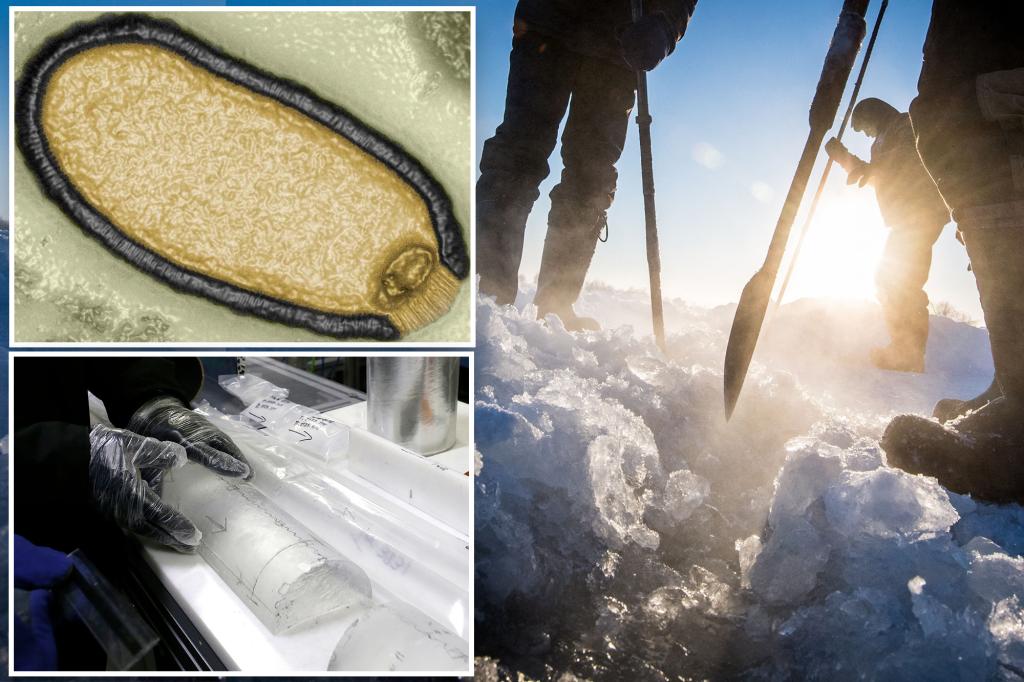Scientists around the world are working to revive ancient cells encapsulated in ice to find new sources of life-saving drugs and possibly bring back a long-extinct species such as the dodo bird.
The science, called resurrection biology, has made immense progress over the past year as researchers in the field turn to the past for solutions for the future, CNN reported.
While scientists are not seeking to bring back dinosaurs à la Jurassic Park (although some aim to resurrect lost plant and animal species), they hope that studying prehistoric cells may reveal new sources of drugs, as well as ways to thwart the dinosaurs. dangerous prolonged processes. latent pathogens.
The research also offers a look at human history and how our ancestors lived and died thousands of years ago, according to CNN.
Jean-Michel Claverie, professor emeritus of medicine and genomics at the Aix-Marseille University Faculty of Medicine in Marseille, France, has been identifying possible “zombie viruses” lurking in Siberia’s permafrost.
Viruses that have been buried for tens of thousands of years could return and potentially devastate life on Earth as global temperatures rise and ice melts.
Resurrection biology scientists work with “zombie viruses” found in ancient ice, including the ancient “pandora” virus from thawing permafrost shown here. Jean-Michel Claverie/IGS/CNRS-AM
In 2014, Claverie isolated a virus that researchers found in permafrost and revived it by inserting it into cultured cells, making it infectious for the first time in 30,000 years, according to CNN.
Then, last February, he and his team isolated several strains of an ancient virus from multiple Earth samples representing five new families of previously unknown viruses. In his research they only infected single-celled organisms with the virus as a safety measure. The samples dated between 48,500 and 27,000 years ago.
These zombie viruses pose a significant threat to humanity, Claverie told CNN.
“We consider these amoeba-infecting viruses to be surrogates for all other possible viruses that could be in permafrost,” the professor said.
Environmental virologist Jean-Michel Claverie identifies viruses latent for years in the Arctic ice. SVFU
“Our reasoning is that if the amoeba viruses are still alive, there is no reason why the other viruses would not still be alive and capable of infecting their own hosts.”
Other “resurrection biologists” are studying ancient specimens as a potential source of antibiotics to combat pathogens that have become increasingly resistant to overused conventional treatments.
César de la Fuente, a presidential assistant professor at the University of Pennsylvania, and his team of researchers are analyzing genetic information from Neanderthals and extinct animal species to find small protein molecules or peptides that they believe have bacteria-fighting powers.
“Today’s bacteria have never faced those molecules, so they may give us a better opportunity to attack pathogens that are problematic today,” de la Fuente told CNN.
More ambitiously, biotechnology and genetic engineering startup Colossal Biosciences this year announced its plan to revive the dodo, a flightless bird extinct since the 17th century, and reintroduce it to its natural habitat on the Indian Ocean island of Mauritius.
Scientists have located viruses tens of thousands of years old in the Siberian permafrost. AFP via Getty Images
The company is also using innovative DNA sequencing, gene editing technology and synthetic biology to try to bring back the Ice Age giant woolly mammoth and Tasmanian tiger, which became extinct in Australia in the last century.
In their efforts to resurrect the dodo, geneticists discovered cells that act as progenitors for the reproductive organs (known as primordial germ cells or PGCs) of the Nicobar pigeon, the dodo’s closest living relative, that can successfully grow in a chicken embryo, according to CNN.
Scientists will compare the genomes of the dodo and the also extinct solitary Rodrigues, a close relative of the dodo, and see how they differ. They will then edit the PGCs of a Nicobar pigeon to give it the physical characteristics of a dodo.
AP
The cells will then be inserted into the embryos of a chicken and a rooster, which will theoretically have dodo-like offspring.
“Physically, the restored dodo will be indiscernible from what we know about the dodo’s appearance,” Matt James, head of animals at Colossal Biosciences, told CNN last month.
If successful, the offspring will not be a true dodo, but rather a hybrid impression of the bird.
“Due to the complexity of recreating a species from DNA, even if it were possible, [it] “It can only result in a dodo-like creature,” said Julian Hume, an avian paleontologist and research associate at the Natural History Museum in London.
“So it will take years of selective breeding to turn a small pigeon into a large flightless bird. Remember, it took nature millions of years for this to happen with the dodo,” he told CNN.
Categories: Trending
Source: vtt.edu.vn
